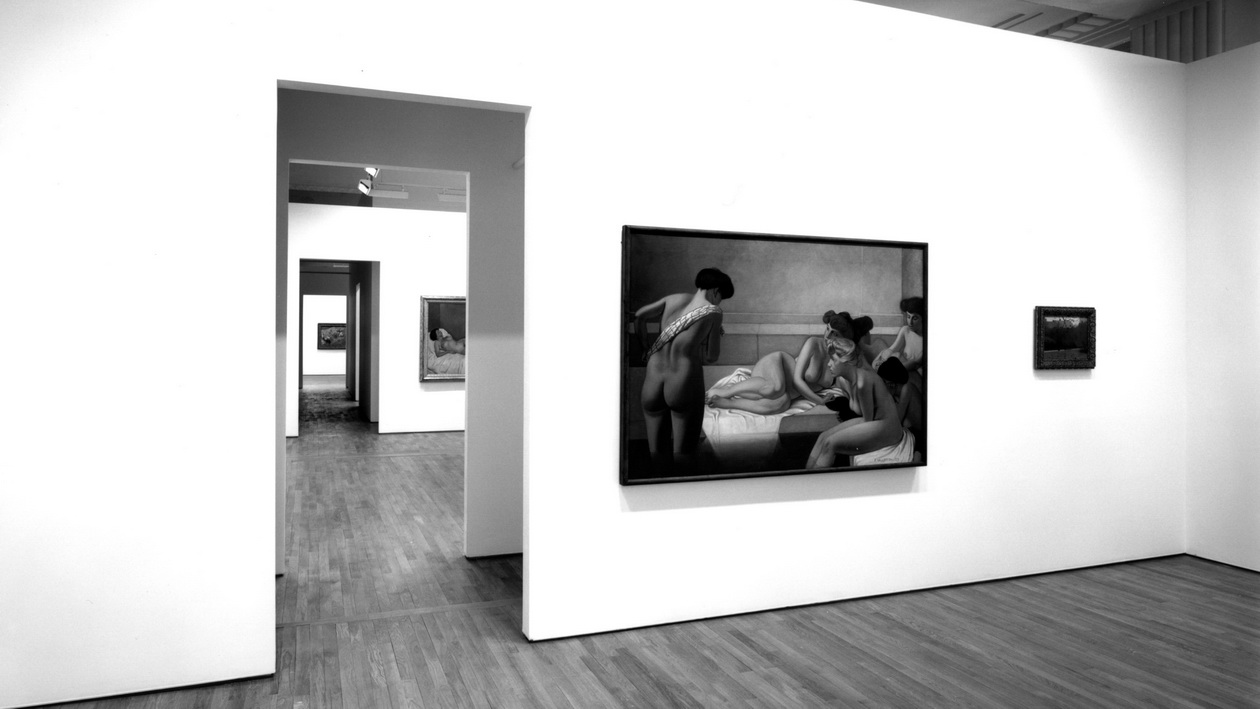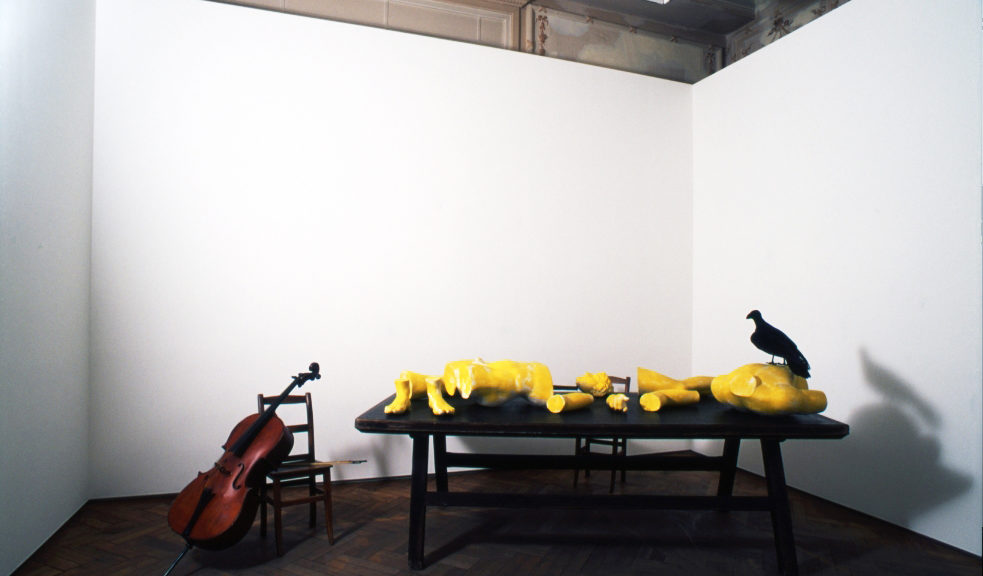[:en]In the case of the Casino Luxembourg, Urs Raussmüller – while retaining the historic architectural structure – transformed a building from 1882 into a contemporary exhibition space that was going to change Luxemburg. Later given the added name „Forum d’art contemporain“, it has remained a vibrant institution with an international echo to this day.
When Luxemburg became the European Cultural Capital in 1995, it needed an exhibition venue that had to be quickly available on the one hand, and, on the other, inexpensive – a new museum was planned to be built later. With his suggestion to redesign the former Casino Bourgeois, Urs Raussmüller succeeded in finding an aesthetically and functionally convincing solution. In the process, he not only created the architecture, but a entire institution that continues to operate to this day.

In the casino, which had been returned to an elementary condition, Raussmüller placed 13 neutral cubes without ceilings and as a result created an ideal structure for exhibitions. The series of spaces is interrupted by in-between spaces in which the former Casino is visible. Each cube is an entity in itself and thus allows for a concentrated focus on the respective artworks.
The goal of each phase of the concept and the reconstruction was the desire to give the artworks the necessary surface, space and light so that they could develop their full potential. At the end of the cultural year in Luxemburg, the Casino became the one and only forum for contemporary art in Luxemburg. Up to today, its goal is to make visible the diversity and complexity of contemporary visual arts.

The two initial exhibitions that Urs Raussmüller organized in 1995/1996 demonstrated the versatility and adaptability of the exhibition architecture: the opening exhibition, “Luxe, calme et volupté. Regards sur le Post-Impressionnisme” with works by Van Gogh, Cézanne and Gauguin, among others, looked towards collectors’ activities in Switzerland’s Winterthur at the beginning of the 20th century. The following exhibition, “Main Stations”, featuring works by Pollock, Warhol, Newman, Stella and their contemporaries, directed its focus to the present and the major innovations in art since 1950. Catalogues were published for both exhibitions by Urs and Christel Raussmüller.[:de]Mit dem Casino Luxembourg verwandelte Urs Raussmüller ein Gebäude von 1882 unter Beibehaltung der historischen Bausubstanz in einen zeitgemässen Ausstellungsort, der Luxembourg verändern sollte. Die Institution, später mit dem Zusatz „Forum d’art contemporain“ versehen, ist bis heute eine lebendige Kunsthalle mit internationalem Echo.
Als Europäische Kulturhauptstadt 1995 benötigte Luxemburg einen Ausstellungsort, der einerseits in kurzer Zeit bereit stehen musste, andererseits – im Hinblick auf einen geplanten späteren Museumsneubau – kostengünstig sein sollte. Urs Raussmüller gelang mit seinem Vorschlag für die Umgestaltung des ehemaligen Casino Bourgeois eine ästhetisch und funktionell überzeugende Lösung. Er schuf dabei nicht nur die Architektur, sondern eine ganze, bis heute funktionierende Institution.

In das in einen elementaren Zustand zurückgeführte Casino stellte Raussmüller 13 neutrale, nach oben offene Kuben und schuf damit eine ideale Ausstellungsstruktur. Die Raumfolgen sind von Zwischenräumen unterbrochen, in denen das alte Casino sichtbar wird. Jeder Kubus bildet eine Einheit für sich, was einen konzentrierten Fokus auf die jeweiligen Kunstwerke erlaubt.
Ziel in jeder Phase der Konzeption und des Umbaus war das Bedürfnis, dem Kunstwerk Fläche, Raum und Licht zu seiner optimalen Entfaltung zu geben. Nach dem Ende des Kulturjahres in Luxemburg wurde das Casino zum ersten und einzigen Forum für zeitgenössische Kunst in Luxemburg. Bis heute hat es zum Ziel, Vielfalt und Komplexität der bildenden Künste der Gegenwart sichtbar zu machen.

Die beiden von Urs Raussmüller durchgeführten Initial-Ausstellungen 1995/96 konnten die Vielseitigkeit und Adaptionsfähigkeit der Ausstellungsarchitektur unter Beweis stellen: Die Eröffnungsausstellung “Luxe, calme et volupté. Regards sur le Post-Impressionnisme” mit Werken unter anderem von Van Gogh, Cézanne und Gauguin, warf einen Blick auf die Sammlertätigkeit im schweizerischen Winterthur zu Beginn des 20. Jahrhunderts. Die darauf folgende Ausstellung “Main Stations” lenkte mit Werken von Pollock, Warhol, Newman, Stella und deren Zeitgenossen den Fokus auf die Gegenwart und die grossen Neuerungen in der Kunst seit 1950. Zu beiden Ausstellungen wurden Kataloge von Urs und Christel Raussmüller herausgegeben.[:]
